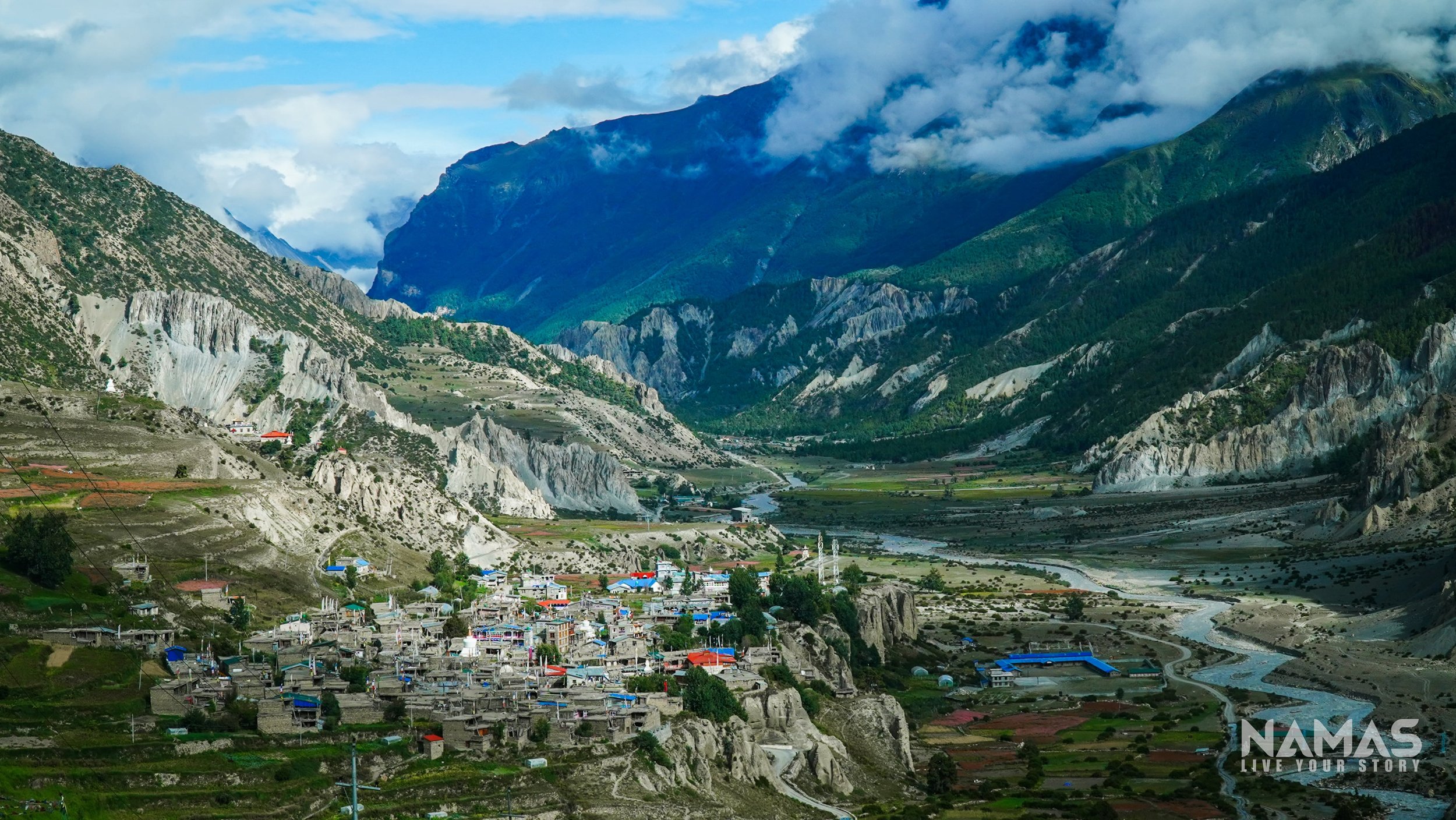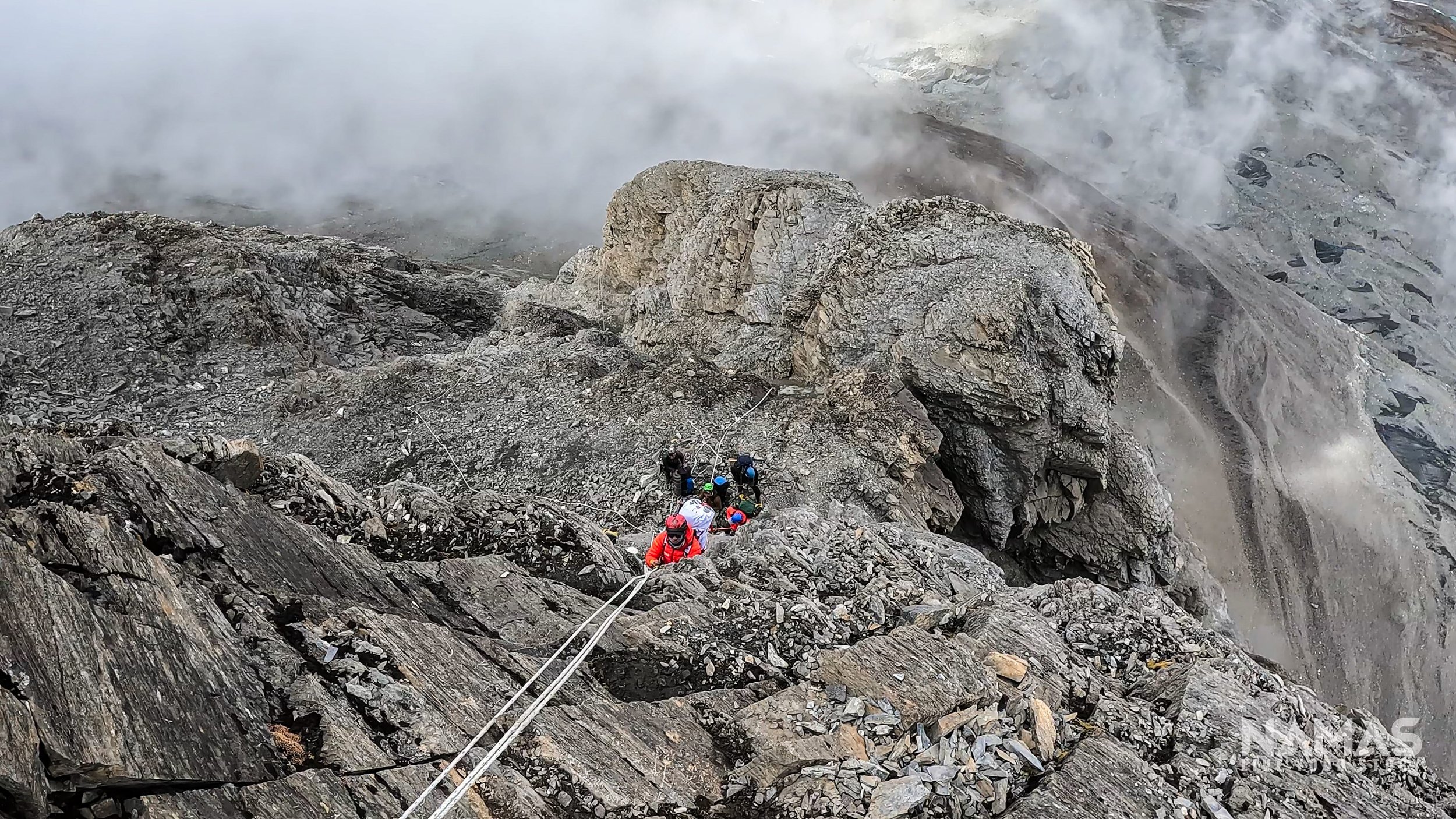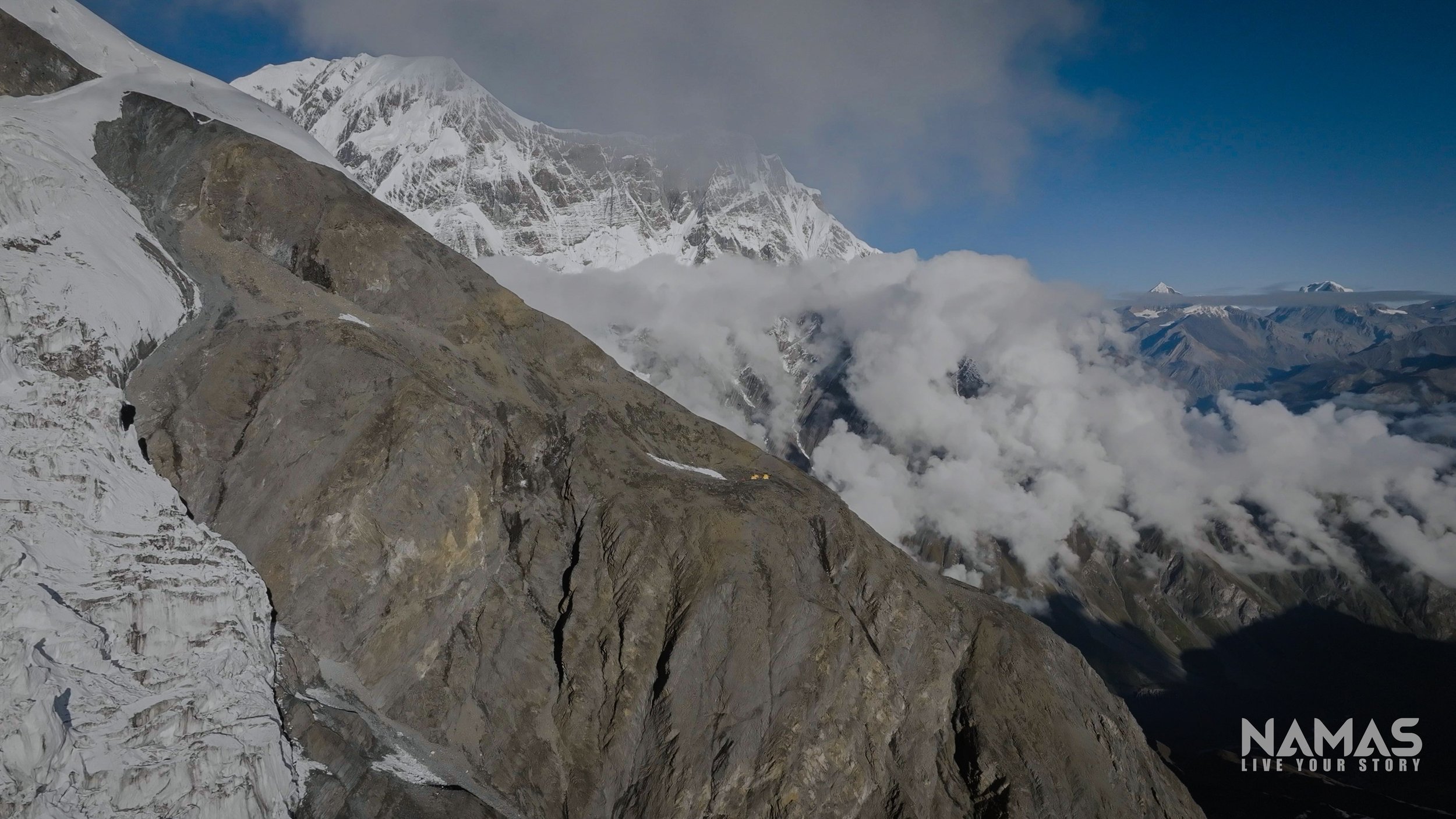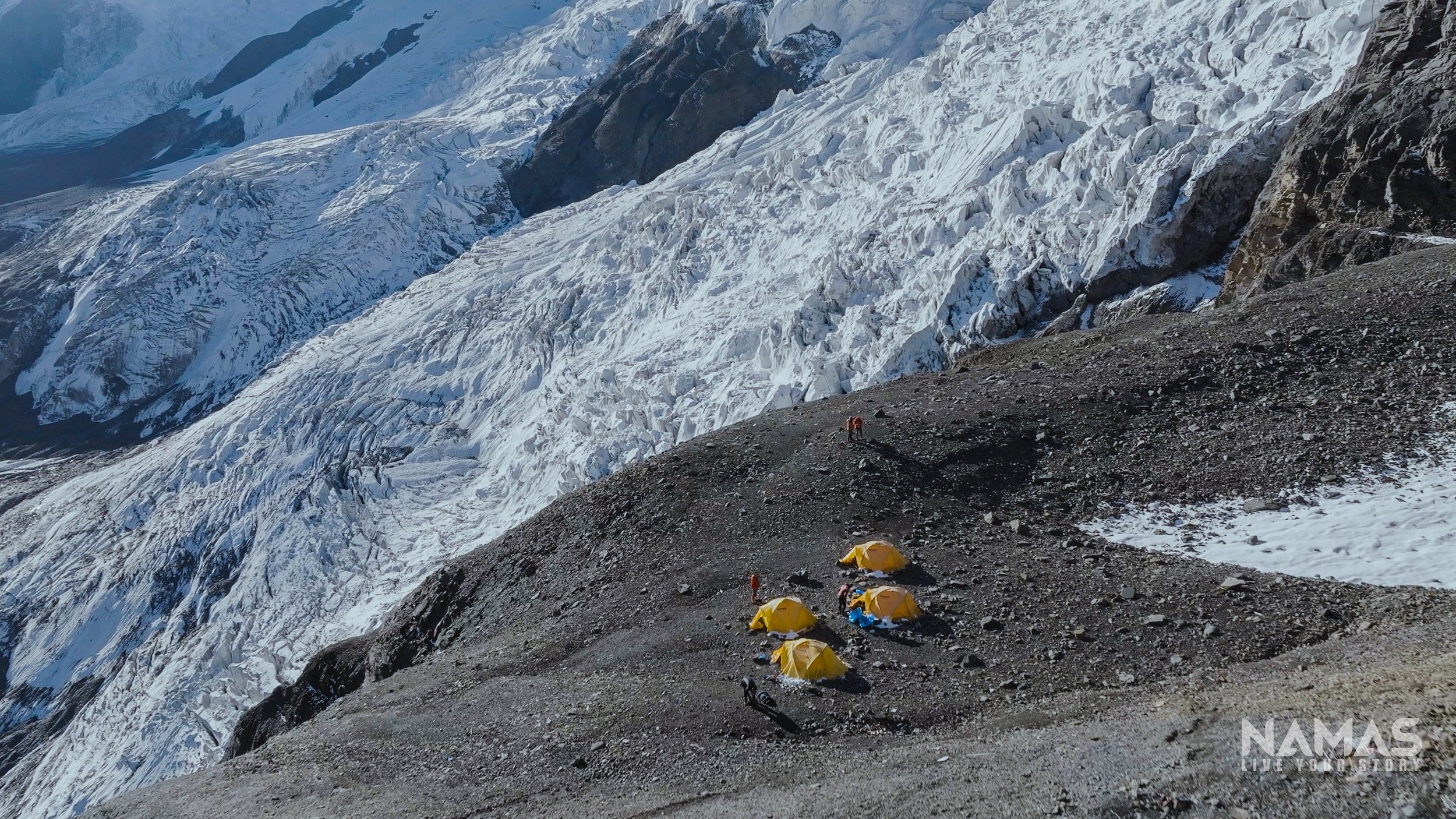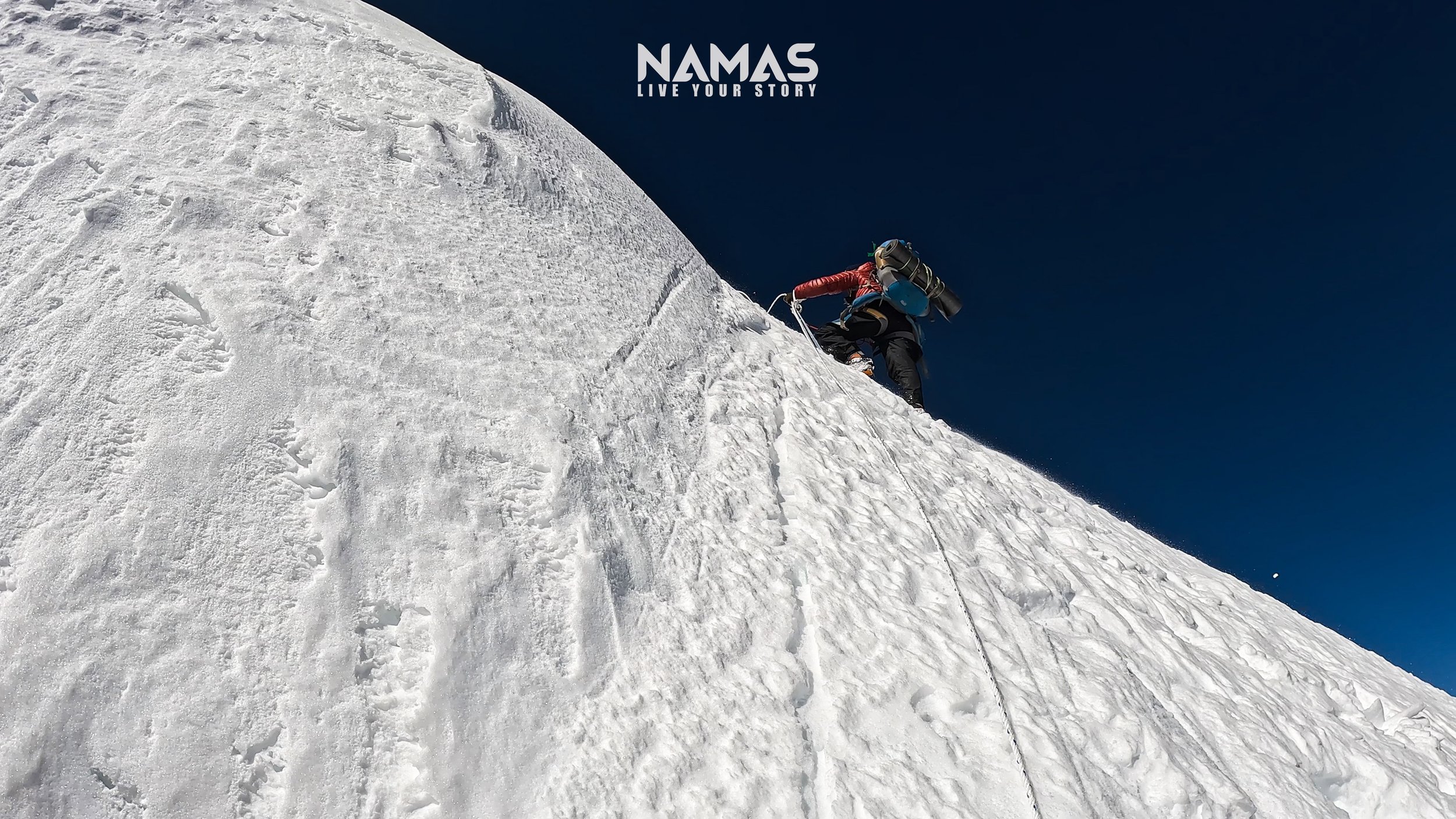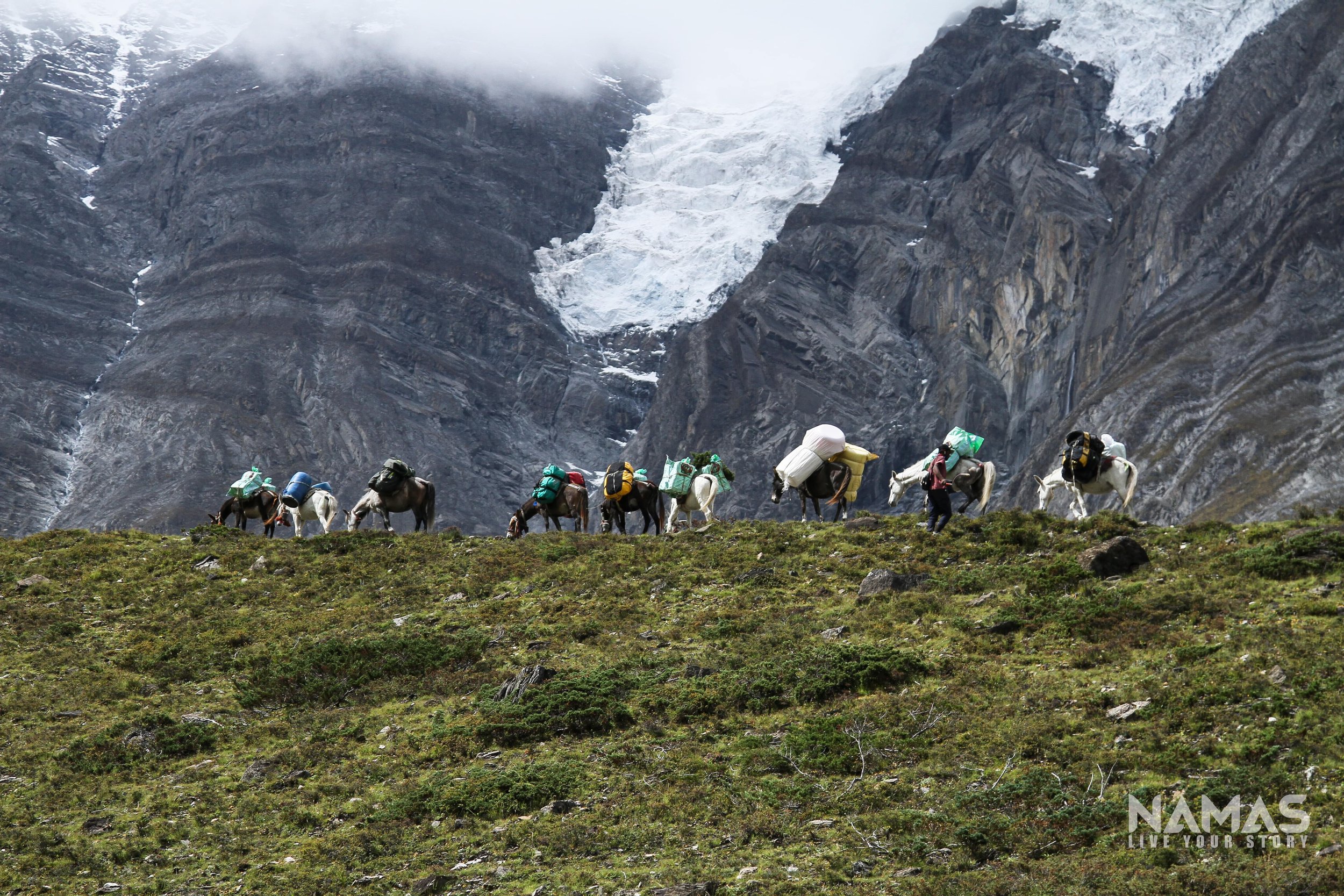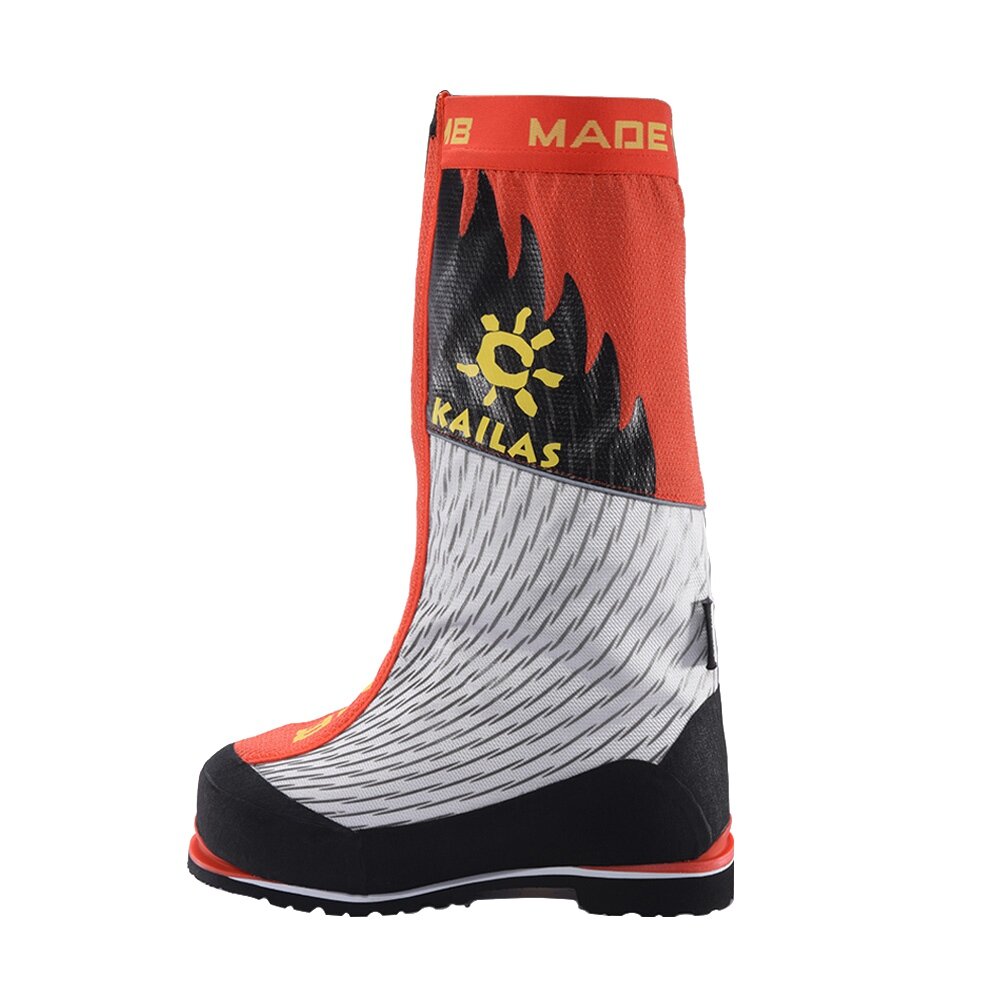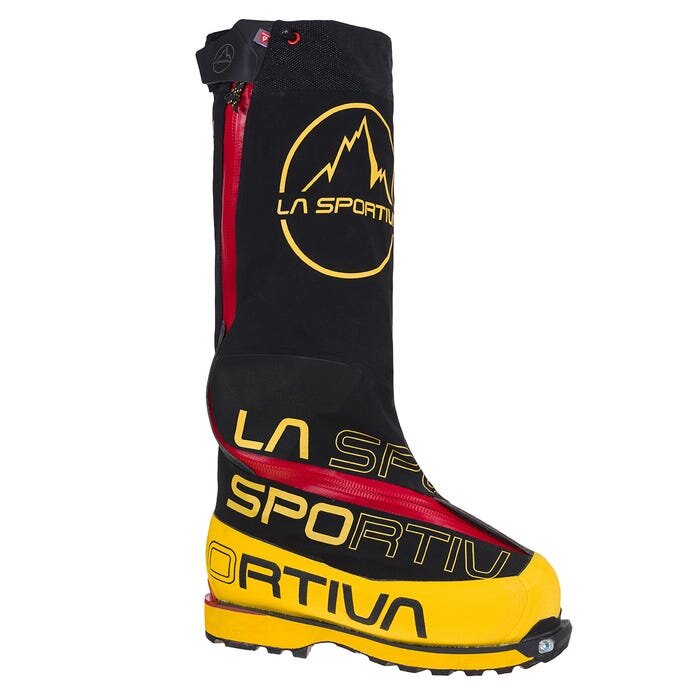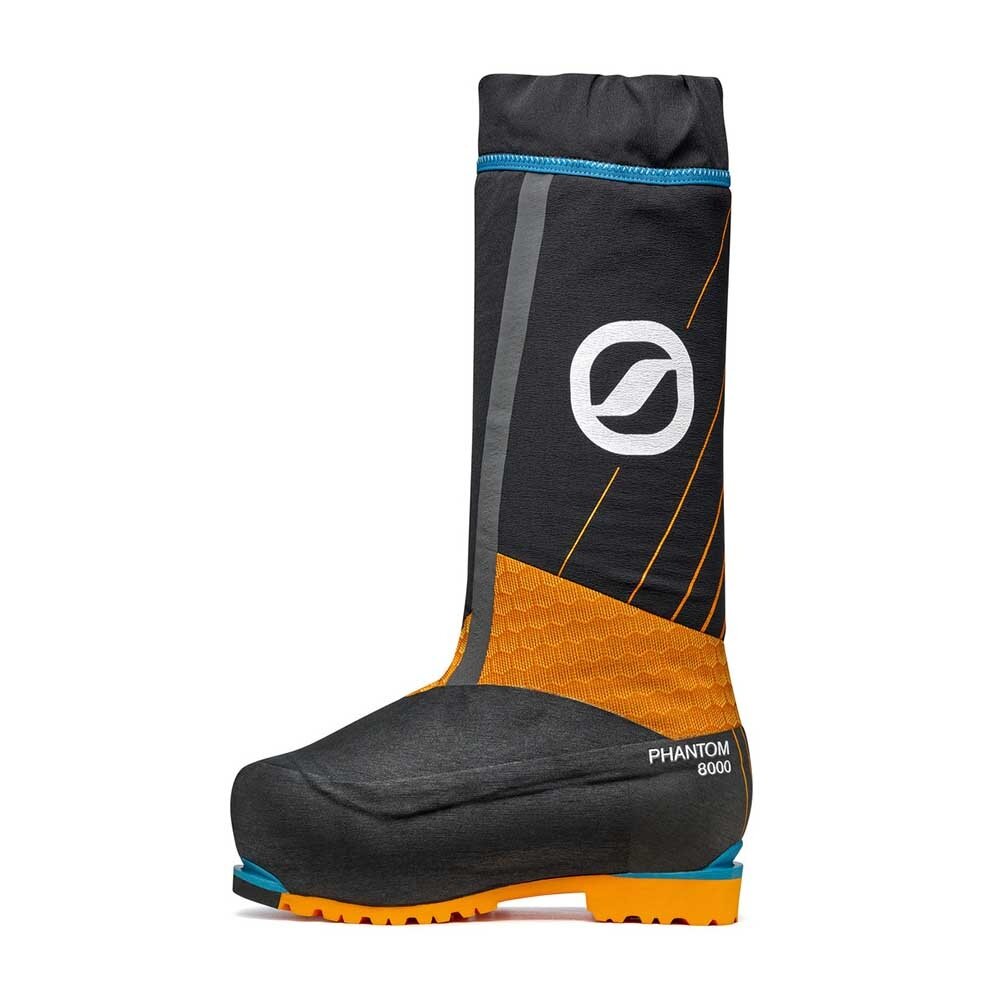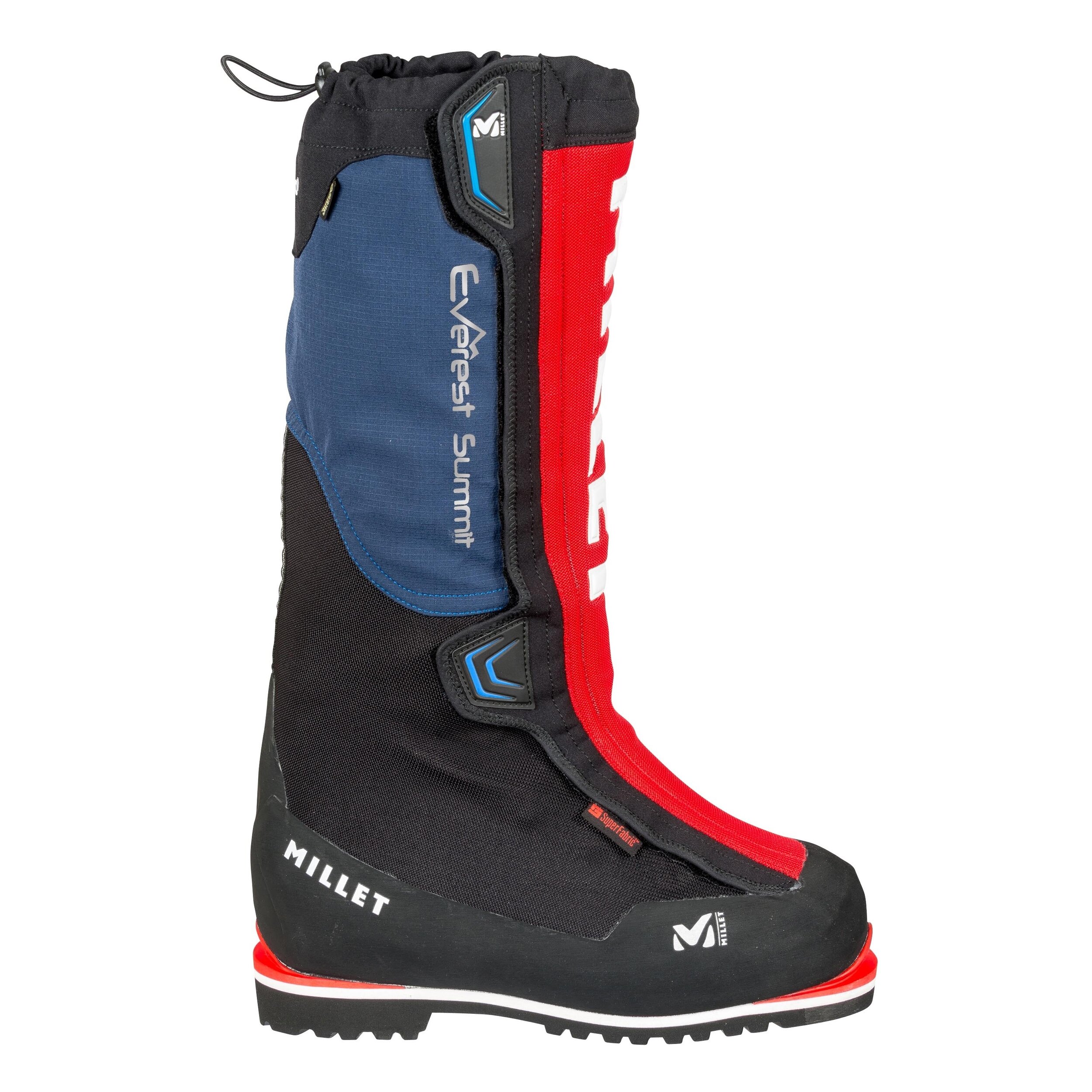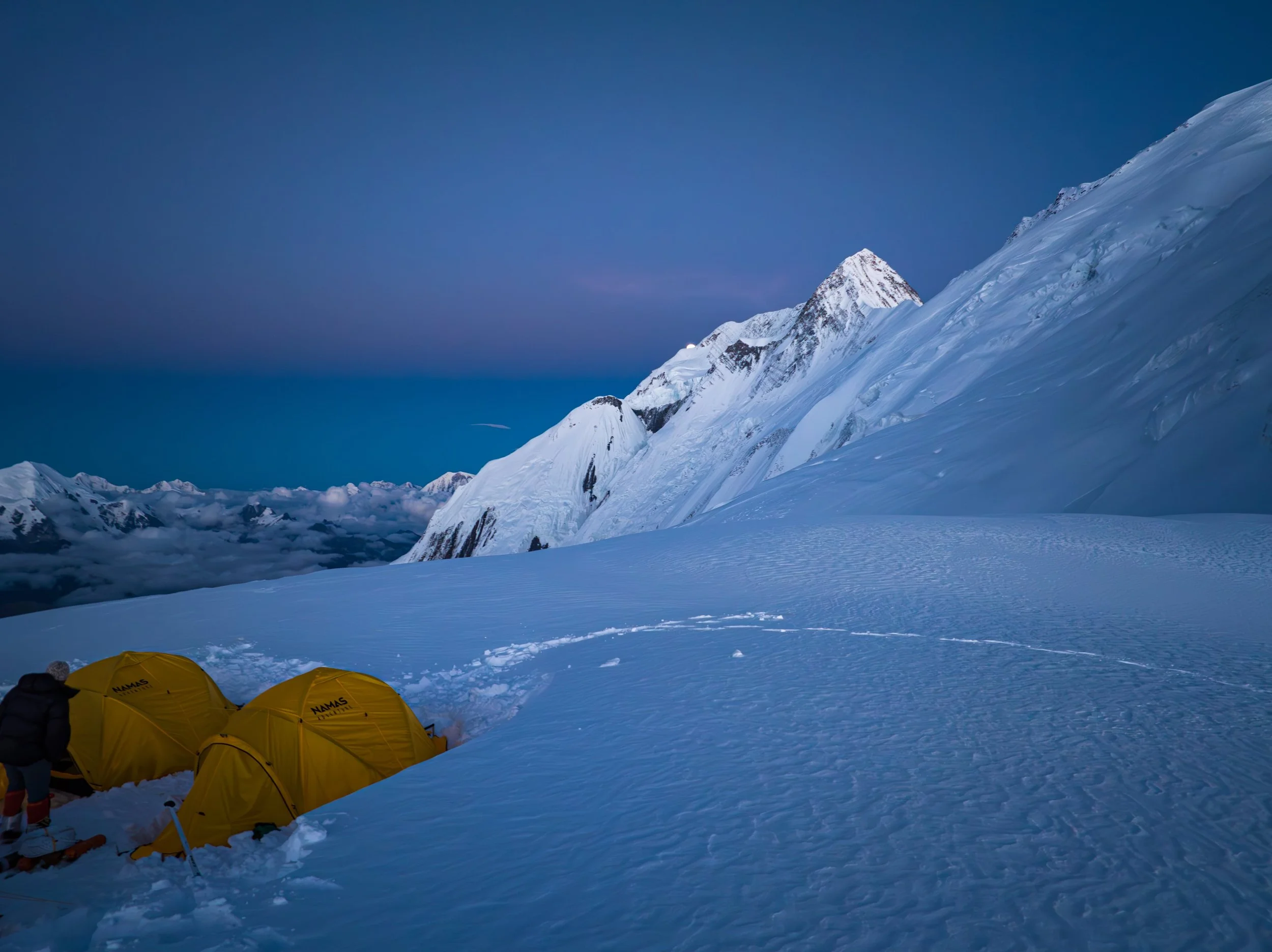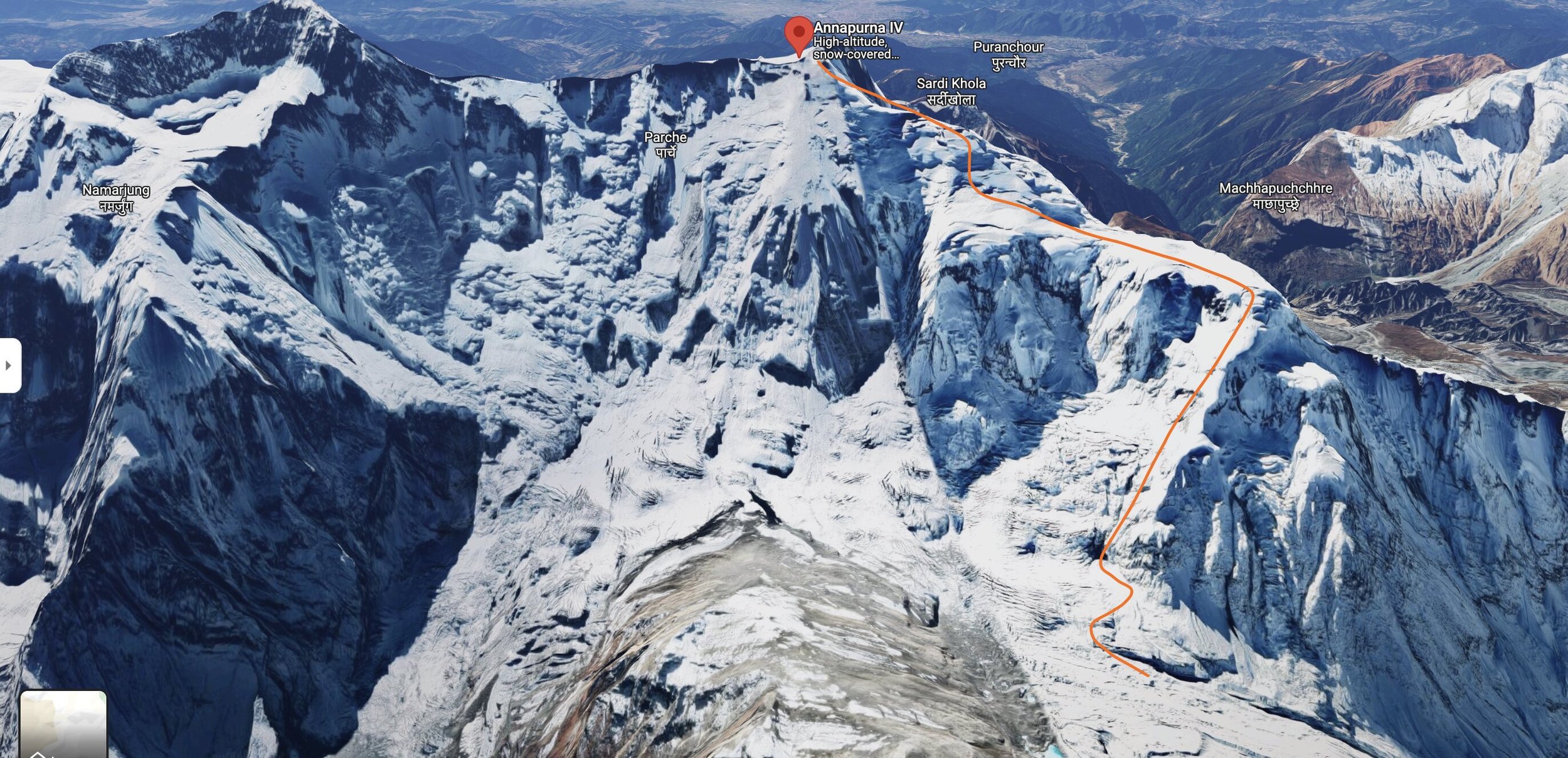Climbers Guide: Annapurna IV or Annapurna 4, 7525M
MOUNTAIN OVERVIEW
Name: Annapurna IV or Annapurna 4 (Link)
Elevation: 7525M/24688FT
Co-ordinates: 28°32′15″N 84°4′58″E
Crowd level: Minimum (Spring/Autumn, 0 - 20)
Difficulty grading: TD+/4 (Alpine/Fitness grading info)
Location: Annapurna region. Humde, Manang.
Parent Mountain: Annapurna massif
Acclimatisation Rotation: 1 rotation
Camps: 4 high camps
Summits: 1 Fore Summit / 1 Main Summit
Country: Nepal
ABOUT THE MOUNTAIN
Annapurna IV, standing at 7,527 meters, presents an ideal mountaineering challenge for climbers seeking a rewarding ascent with manageable technical requirements. Situated within the renowned Annapurna massif range, it occupies a prominent position between Annapurna II (7,937 meters) to the west and Annapurna III (7,555 meters) to the east.
Unlike its neighboring peaks, Annapurna IV offers a climbing route with fewer inherent dangers and a semi-technical nature, making it accessible to climbers with moderate experience levels. Within the Annapurna massif range, it is recognized as the least perilous and least technically demanding summit.
Despite its exceptional attributes, Annapurna IV remains relatively less frequented compared to other peaks in the region. However, its allure lies in its lesser-known status, offering climbers the opportunity for a unique and memorable ascent amidst the breathtaking Himalayan landscape.
HISTORY
Annapurna IV was first climbed in 1955 by a German expedition led by Heinz Steinmetz via the North Face and Northwest Ridge.
HOW TO GET HERE?
There is one main route to get to Annapurna IV Base Camp.
Via Humde village, Manang
Manang village, acclimatisation hike 3519M
Route to Annapurna IV Base Camp 4800M - 4850M
We highly recommend an acclimatization trek to Manang village at 3,519M, before hiking up to the AIV base camp. Climbers will navigate through lush pine forests and uphill terrain heading toward base camp. Climbers will have to hike up the steep hill and moraine to reach the Annapurna IV base camp situated at 4,800 meters.
Set against the backdrop of the majestic Annapurna massif, the Annapurna IV base camp offers a picturesque setting with panoramic views of Annapurna II, IV, and III. The flat surfaces of the hill provide ample space for setting up multiple camps, while nearby glacier lakes and streams serve as reliable water sources for expedition use.
Annapurna IV, Base Camp, 4800M - 4850M
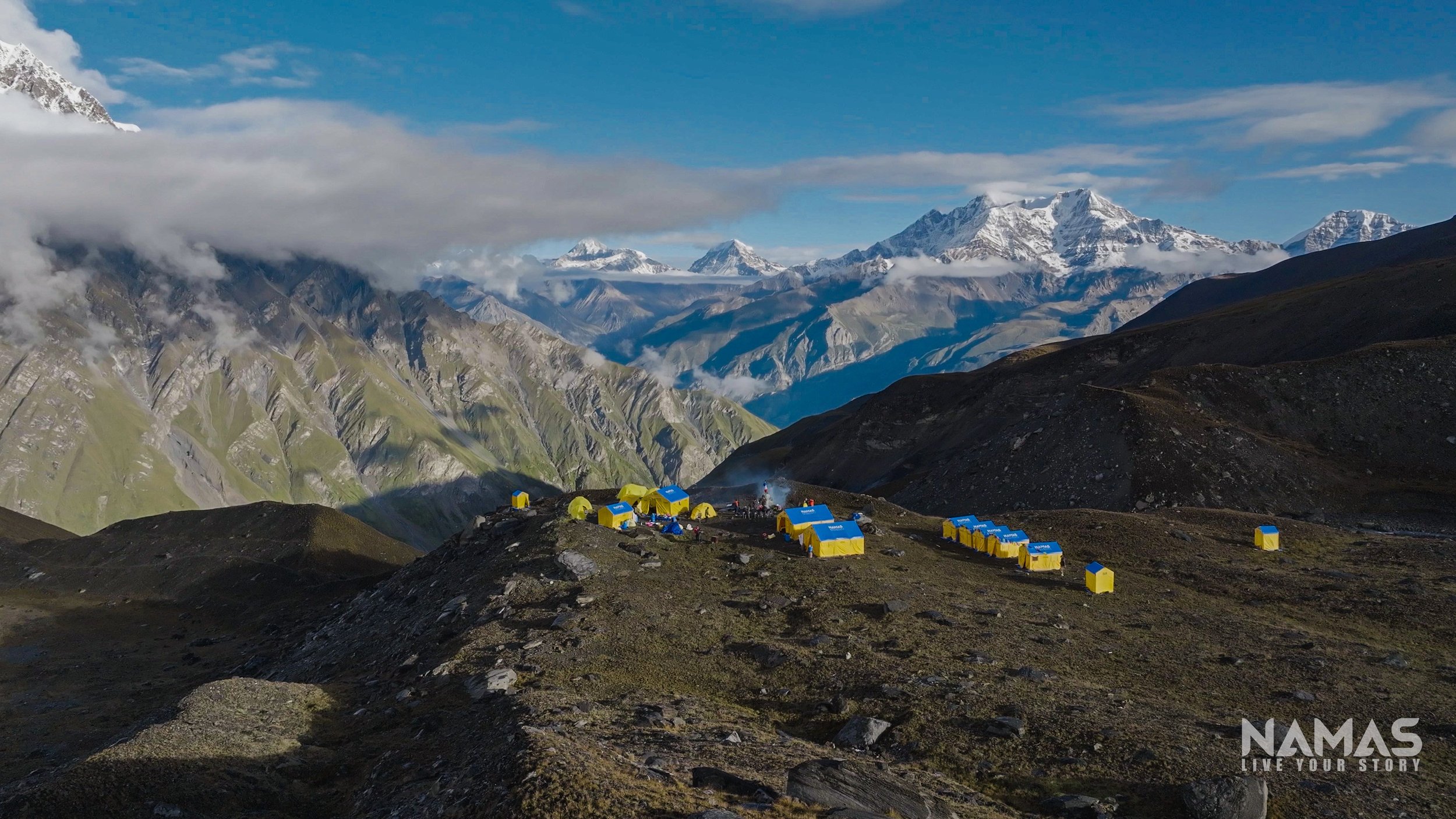
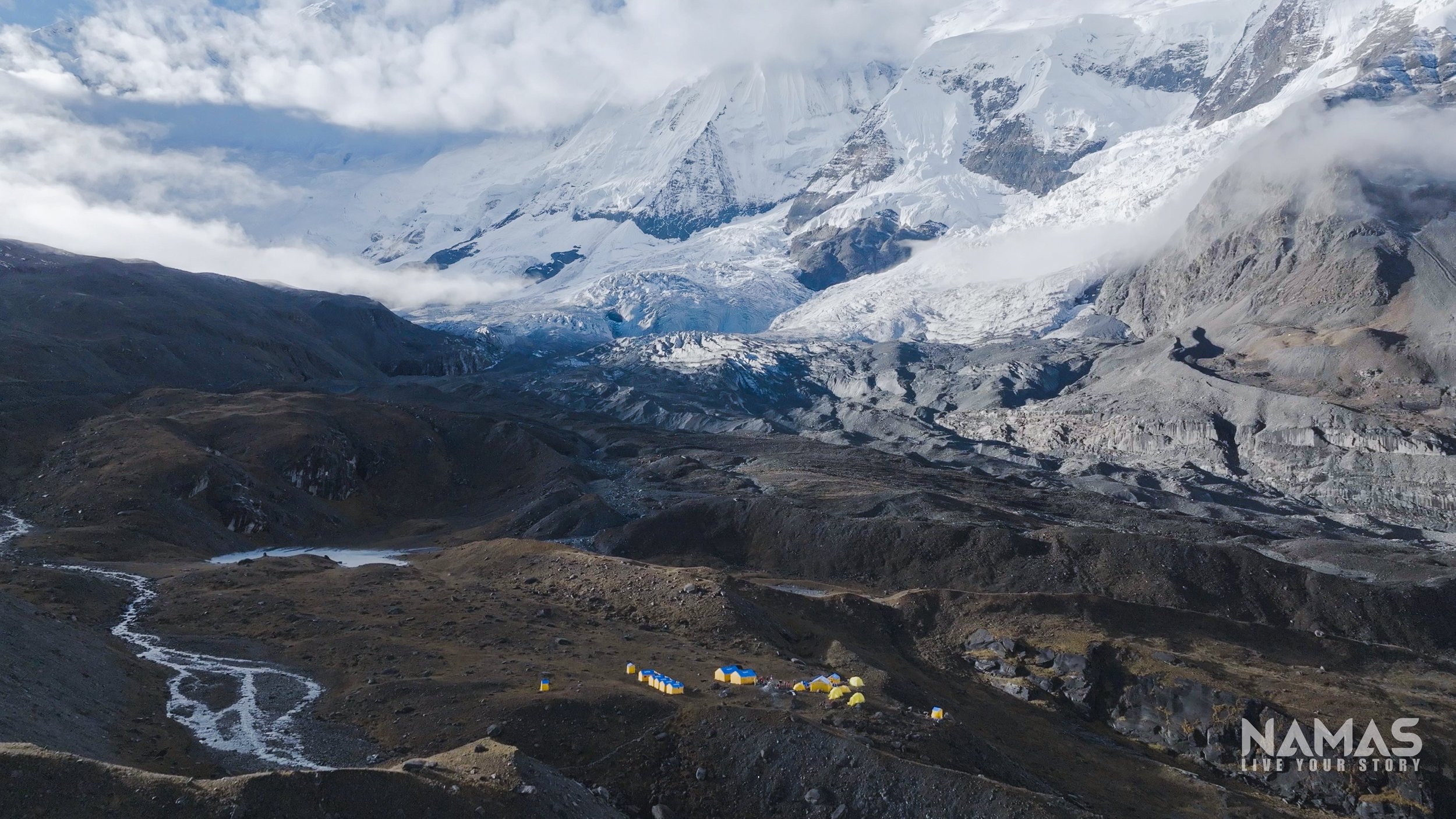
Route to Camp 1 5500M. 5 - 7 hours
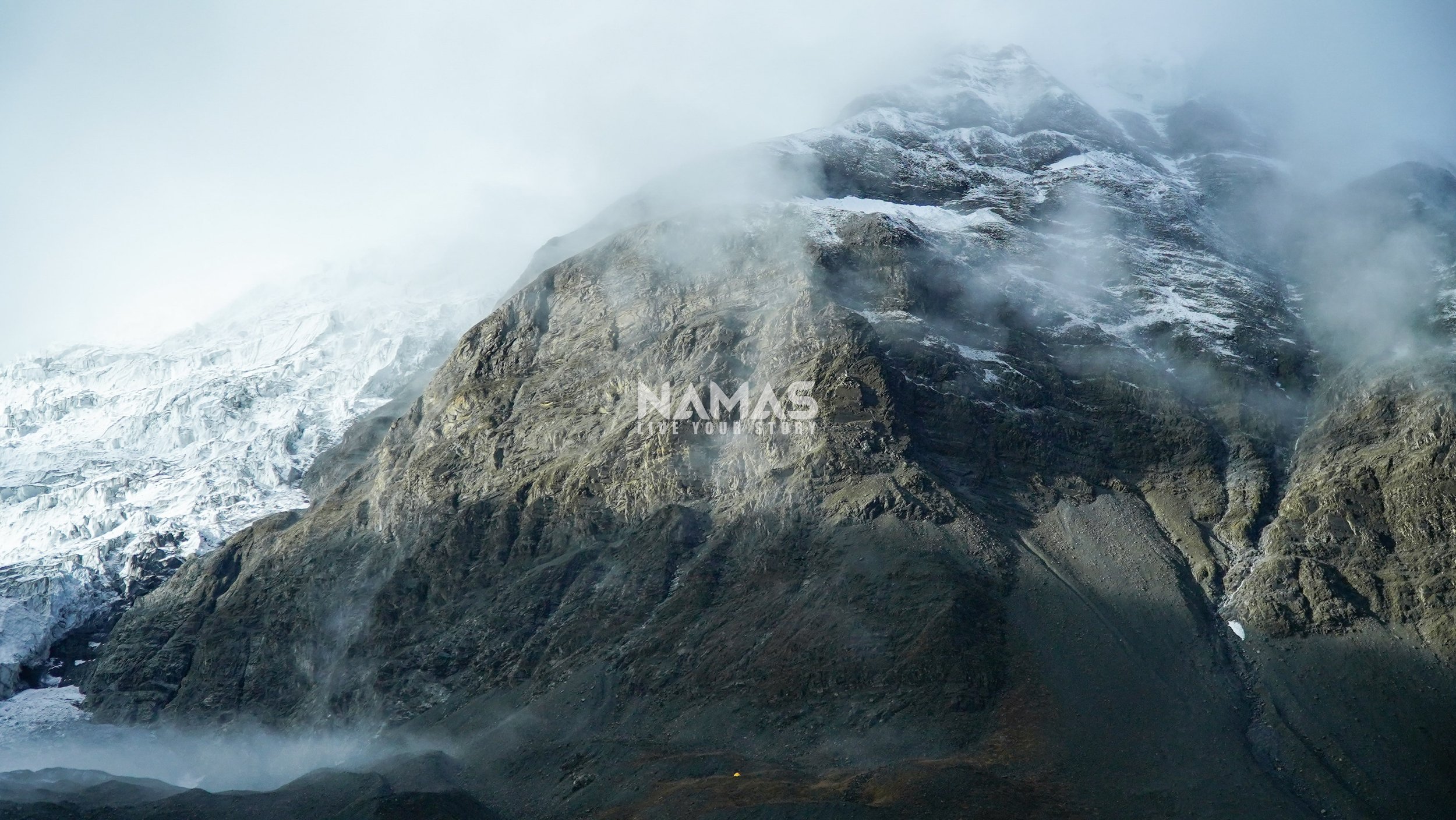
Traversing the moraine glacier, climbers will ascend to the base of the mountain. The journey to Camp 1 entails a challenging ascent up a steep, rocky slope. To assist climbers, a fixed line will be established by the team, facilitating vertical climbs with inclines ranging from 60 to 80 degrees on sharp rock slabs. Negotiating this rugged terrain involves scrambling, jummaring, and traversing exposed sections of the mountain—a crucial initial technical phase of the ascent.
Expeditions conducted during the spring season should anticipate encountering a substantial amount of snow compared to expeditions in autumn.
Camp 1, 5500M
Route to Camp 2, 5500M - 5600M. 5- 6 hours
The ascent to Camp 2 commences with a challenging uphill climb of loose rocky terrain before climbers reach a designated crampon point. Here, team members secure their crampons in preparation for an 80-degree steep climb across icy and snowy terrain.
Climbing towards camp 2, the route carefully avoids areas prone to avalanches, it skirts the left side of the mountain, where avalanche activity is more common. Despite initial apprehensions, climbers can rest assured that the climbing route is designed with safety in mind and is not susceptible to avalanches. Although a few crevasses may be encountered along the way, they are manageable, either by navigating around them or making calculated leaps across. It is essential for climbers to remain securely attached to the fixed line throughout the ascent.
Offering breathtaking views of the Annapurna wall and the expansive glacier, this climb presents a picturesque and rewarding experience amidst the awe-inspiring scenery of the Himalayas.
Annapurna IV Camp 2 (5500M - 5600M)
Camp 2, 6500M
Situated on a compact, level expanse of the mountainside, this camp offers protection from strong winds originating from the north and northeast sections of the mountain range. Prepare to be captivated by the breathtaking panorama unfolding before you. From this vantage point, the majestic peak of Manaslu, towering at 8,163 meters, commands attention in the distant horizon. Additionally, the formidable wall of Annapurna II dominates the landscape, extending far into the leftward vista, where the impressive silhouettes of Himchuli and the Chulu ranges adorn the skyline..
View from camp 2. Annapurna II 7937M and Manaslu 8163M in the far distant.
Route to Camp 3 (6 - 7 hours)
Upon departing from Camp 2, climbers will immediately face a challenging ascent up the headwall, marked by a steep incline. Following the climb past two prominent boulders, climbers will encounter a sizable crevasse directly ahead. While manageable, this crevasse presents a notable obstacle, with plans for ladder crossings in future expeditions should the opening widen.
Upon successfully navigating the crevasse and ascending another incline, climbers will find themselves traversing across a vast expanse of snowfield. After approximately 1.5 to 2 hours of rigorous climbing, Camp 3 comes into view, offering a welcome respite amidst the stunning mountainous terrain.
Camp 3, 6600M
Positioned on the expansive shoulder of the mountain, Camp 3 offers 360 views of the surrounding mountains. Fishtail (Machhapucchre) mountain is directly to the north-east along with Annapurna 1 and south. With a sweeping view of a significant portion of the mountain directly ahead, climbers have the option to strategize their summit route either along the mountain's slopes or via its southern aspect. Given the complexity of this vast slope and the absence of marked routes typical of more commercialized mountains, the presence of experienced leaders and skilled route setters is imperative.
Navigating this terrain demands a high level of expertise, as the route may not be easily discernible, and few climbers are likely to traverse it. Additionally, certain areas may pose a risk of avalanches, underscoring the importance of proficiency in navigation and avalanche detection. With the guidance of seasoned professionals, climbers can confidently navigate the challenges of Camp 3 and proceed with their ascent toward the summit.
Annapurna IV Camp 3 6600M
The chaos to navigate to make it to the summit.
Route to Camp 4, (6 - 8 hours)
Embarking from Camp 3 towards Camp 4 involves traversing snowy fields and negotiating uphill slopes before descending across snow fields. The subsequent grueling ascent presents a continuous uphill climb toward the mountain's shoulder, requiring precise navigation skills from route setters.
This route offers teams two challenging options: a direct push to the summit from Camp 3, with an overnight stop at Camp 4 on the return, or a camp at Camp 4 followed by a summit push before returning to Camp 3. Camp 4, positioned at 7000 meters altitude on a flat surface, demands extra caution due to potentially windy conditions.
Camp 4 can be on the setup on the shoulder (middle) of the mountain.
true Summit of Annapurna IV 7525M to Camp 4 (7000M). 10-12 Hours
Climbers need to prepare themselves mentally for a lengthy, steep, and arduous journey to the summit. The ascent from Camp 3 to the summit and back typically spans 12-14 hours. Following departure from Camp 3, climbers face a daunting 1000-meter climb characterized by its steepness and length, making it a formidable challenge.
Safety measures include the installation of fixed lines along perilous and overhanging sections of the mountain walls. Weather permitting, summit views offer a breathtaking panorama encompassing the entire Annapurna massif range, including Annapurna I, II, III, Gangapurna, and Tilicho Peak, as well as prominent peaks like Manaslu (8163 meters), Machhpucchre, Ganesh Himal, and Dhaulagiri.
Upon completion of the summit, the objective is to return safely to Camp 4. Camp overnight, rest for a night and then an early downhill morning to base camp, which is expected to be a long 8-10 hours descend from the mountain, bringing our expedition to a conclusion.
Namas Adventure team members at Annapurna IV 7525M true summit. This one will be for life time memories. What a climb and pure test of grit, will and mental toughness.
Watch full Annapurna IV 7525M Expedition video
Feel inspired to embark on a 7525M remote expedition with not many climbers? Let us be your guide to remote mountain peaks in the Himalayan region, including the challenging Annapurna IV at 7525 meters. Our specialized team excels in safely accessing and navigating these pristine mountain territories, opening up new possibilities for exploration and discovery.
Visit our website for more information on our Annapurna IV expedition and our range of international expeditions. For booking inquiries, reach out to us at bookings@namasadventure.com.
Unleash the explorer within you, and climb where less has been.
LIVE YOUR STORY - NAMAS ADVENTURE TEAM
Visual journey of Annapurna IV 7525M Expedition - NAMAS ADVENTURE
Early reminder - Click to enlarge on images
Annapurna IV, standing tall at 7525 meters, is an exhilarating gem nestled within the roaring Annapurna massif. Although it may be the least tallest among the Annapurna peaks, conquering it is anything but easy. With fewer commercial teams venturing this way, it's an ideal choice for climbers seeking remoteness and a healthy dose of adventure. During the fall of 2023, we were the sole expedition on the mountain, a small group of 15 intrepid souls facing this magnificent giant, offering a visual feast for those seeking their next mountaineering challenge.
Our journey kicks off in Kathmandu, embarking on a scenic drive to Besisahar. From there, it's an adventurous off-road (albeit bumpy) ride along the Annapurna circuit trail to reach the charming village of Koto. Trekking approximately 20 kilometers leads us to the picturesque village of Humde. Along the way, we conduct acclimatization rotations and soak in the stunning natural beauty while relishing delicious meals in the serene village of Manang.
2023 Fall Namas Adventure Annapurn IV squad. Jeep ride via beautiful waterfalls
Village of Upper Pisang and Gateway to heaven (Swarga Dwar) Mountain in the middle.
Manang village, acclimatisation hike 3519M
Route to Annapurna IV Base Camp 4800M - 4850M
The trek to Annapurna IV Base Camp involves a significant altitude gain in a single day. Following our acclimatization trek to Manang village at 3519 meters, once acclimatized, we gear up for a steep ascent of 1400 meters to reach the Annapurna 4 base camp. The trail winds through lush pine forests, leading us uphill as we make our way toward the base camp.
Annapurna IV, Base Camp, 4800M - 4850M


Route to Camp 1 5500M. 5 - 7 hours

As you set off from the base camp, your first challenge looms large, appearing tall, mean, and quite intimidating. Yet, once you begin the climb, it's not as daunting as it seems!
If this camp doesn't impress you, I'm not sure what will! 😎
Route to Camp 2 5500M - 5600M. 5- 6 hours
Ascending through snow and ice starts now! The adventure kicks off with a steep uphill climb from camp 1 to camp 2.
Annapurna IV Camp 2 (5500M - 5600M)
Camp 2 is positioned strategically on a compact, level area of the mountain, offering protection from the robust winds that gust from the north and northeast sides. From this vantage point, the impressive Manaslu at 8163 meters looms in the distant backdrop, flanked by the colossal Annapurna II. The panoramic vista extends extensively to the left, showcasing the Himchuli and other Chulu ranges. It's a stroke of luck to bivouac at this spot; the vistas here continually improve, with clouds often swirling below, adding a dramatic flair to this already stunning landscape.
View from camp 2. Annapurna II 7937M and Manaslu 8163M in the far distant.
Route to Camp 3 (6 - 7 hours)
Once again, the day kicks off with an exhilarating ascent, scaling the steep headwall immediately upon departure from camp 2. A substantial crevasse looms ahead after navigating the headwall, followed by a sprawling plateau of flat snow leading to camp 3. Careful navigation and caution are key on this route.
The thrilling culmination of challenges awaits as you navigate the final daunting terrain towards the summit.
Annapurna IV Camp 3 6600M
Route to the true Summit of Annapurna IV 7525M to BC. 16 - 18 hours
An early start marks the beginning of the journey towards the ultimate goal. It'll be an arduous and audacious day, braving the elements and keeping an eye on the winds.
Namas Adventure team members at Annapurna IV 7525M true summit. This one will be for life time memories. What a climb and pure test of grit, will and mental toughness.
The summit stands narrow, fully exposing the Annapurna massif on all sides. Views extend to Machhapucchre (Fishtail), Manaslu at 8163 meters, and the sprawling Pokhara valley, all visible from this vantage point.
Are you planning the Annapurna IV 7525M expedition as your next big mountaineering adventure? We have departures every year (spring/autumn). For more information on our Annapurna IV expedition or any of our other expeditions do check out our website.
(Call/WhatsApp) - +1 347-476-9547 or send us an email at bookings@namasadventure.com
Everything you need to know about Cho Oyu 8201M Expedition - Namas Adventure
Climbing Cho Oyu (8201m), the world's 6th highest peak, is an incredible opportunity to stand atop one of the “easier” 8000m giants. Located on the Nepal-Tibet border, Cho Oyu offers stunning Himalayan scenery and a chance to glimpse life in Tibet. This complete guide provides everything you need to know to prepare for and succeed on the mighty Cho Oyu.
1. When is the best time to climb Cho Oyu?
The autumn months of September-October are an ideal season for climbing Cho Oyu.
2. How much does the Cho Oyu expedition cost? What does it include? How is Namas operating the expedition differently?
Our Cho Oyu expedition is priced at USD $33,000 per person and includes premium, high-quality all-inclusive peak climbing services. We prioritize safety by implementing a 1:1 guide-to-client ratio with additional Sherpa guides for high-altitude logistics/ rescue missions and the use of 4 X personal supplemental oxygen (highest in the industry). Our team is dedicated to ensuring your safety and making sure your expedition runs smoothly. As a company, we are committed to our core values of responsibility, ethics, and sustainability. With our team, climbers can focus solely on their climbing holiday and the fun times ahead without any worries.
List of what’s included in your booking.
IFMGA/NMA certified Guide leader
$1000 Individual tip pool. (This is not a summit bonus tip) The tip pool will be fairly distributed among all Namas staff members. (Guides, porters, drivers, hotel security, and staff). Guest may personally hand in extra tips to our guides and porters)
Namas Branded merchandise (Down Jacket, Cap, Buff)
1:1 Sherpa/client ratio. Additional Supporting Guides will be allocated based on climbing members’ number.
Head chef and kitchen helpers (Helpers increase with the number in climbing team members)
2 nights before the expedition and 1 day after the expedition. Hotel in Kathmandu. (Should clients return early from their expedition, clients will be responsible for their extra Kathmandu hotel bookings)
All trekking and climbing permits (Chinese government climbing permits)
All internal-local transportation to and from the trekking trail head. Tibet and Kathmandu
Flights Lhasha - Kathmandu - Lhasha
Expedition tents, single tents in Base Camps and shared in higher camps Brands Salewa, Mountain Hardwear, Samaya equipment, Kailas
4 Oxygen Bottles
60 kgs personal weight
Freezed dried meals during camping days (Chicken, mushroom, vegan options etc)
Chocolate, energy bars, hydration pills, biscuits, canned foods, nuts
Burners and expedition equipment
Walkie-talkie/ Satellite phone
Breakfast, Lunch, and Dinner on trek and expedition days.
Lodge accommodation during the trek
Porters per guest
Arrival pick up and departure
Basic First aid kit
Welcome/Farewell leave Dinner
4. The first ascent of Cho Oyu 8201M?
Cho Oyu was first summited in 1954 by a small Austrian/Tibetan expedition.
5. How many climbing routes are there to climb Cho Oyu?
There are two main commercial expedition routes in Cho Oyu. The west ridge route is the choice for most expedition companies.
6. Why is Cho Oyu considered easy and safest 8000M expedition?
Cho Oyu stands out as one of the easier and safer 8000m peaks, mainly attributed to its manageable technical difficulty and a camping/climbing route that is less susceptible to avalanches. The post-monsoon period in this region of Tibet-Nepal offers relatively stable weather conditions, resulting in a historically lower fatality rate compared to other peaks above 8000m. The presence of skilled Sherpa guides and the Nepalese climbing system further enhance the safety measures associated with Cho Oyu for high-altitude expeditions.
7. What level of experience and qualifications are required for climbers to safely participate in the Cho Oyu 8201M expedition? Additionally, is it necessary for climbers to be accompanied by professional guides?
Experiences - To participate in the Cho Oyu expedition, a minimum requirement is previous high-altitude climbing experience, including at least two 6000-meter peaks and one 7000-meter peak, such as Himlung Himal, Baruntse, Mt. Nun, or Spantik. It is a must for climbers to have knowledge and experience of long-duration hiking (10+ hours) and climbing using crampons on snow, ice, and steep surfaces, as well as being comfortable and proficient in using fixed ropes on steep and exposed sections. Additionally, it is important for climbers to have a good understanding of climbing gear, basic rope techniques, and the ability to handle cold and windy conditions. Unlike other places, rules in Tibets are strict and clients will have to present proof of certification for the pre-requirements before climbing 8000M peaks.
For those with intermediate experience levels and no previous 7000M+ climbing experience, we highly recommend gaining more experience before attempting this peak. However, for those with deep knowledge of climbing technical peaks and are seasonal alpine climbers, Cho Oyu may be considered. In Tibet, it is essential to experience the local way of doing things, and cultural perspective, bonding with local climbing leaders, and understand their perspective on climbing big mountains. This will give you a wider understanding of the climbing culture in Nepal.
8. What is the number of high camps established for the Cho Oyu expedition?
We will strategically plan 3-4 high camps during our Cho Oyu expedition mission.
Route: West Ridge, Tibet
Advanced Base Camp (5800M/18372FT)
Cho Oyu Camp 1 (6500M/21,325FT)
Cho Oyu Camp 2 (7100M/3,294FT)
Cho Oyu Camp 3 (7400M/24278FT)
Cho Oyu Summit (8201M/27765FT) 12 - 16hrs
9. What is the recommended itinerary for proper acclimatization during the Cho Oyu expedition?
As with all high-altitude expeditions, the principle of "climb high, sleep low" applies. Progressing slowly and steadily is key when climbing extreme high-altitude peaks. During Cho Oyu expedition, we will conduct 2 rotations between Advanced Base Camp, Camp 1, 2, and 3. Proper acclimatization is crucial in order to ensure that the body is well-rested, adapted, and stronger to climb even higher. When undertaking a high-altitude climbing adventure, taking a slow and steady approach is essential for success. Our itineraries have been carefully crafted by our guides, who possess years of climbing and guiding experience.
10. What level of training and experience is required for the Cho Oyu expedition climb? Can you provide guidance on an appropriate training plan?
When planning any high-altitude expeditions, it is essential to be in optimal physical shape, and the Cho Oyu expedition is no exception. A sustained, disciplined training plan should be implemented. You can either follow the training template provided or hire a personal trainer (either online or in-person) to prepare yourself for this expedition. This includes mimicking walking on step-up ladders, similar to those encountered when climbing steep faces at high altitudes.
We highly recommend focusing on endurance, core, and strength training. Aerobic exercises such as long-distance running (50-60Km+) weekly or cycling (100-160Km weekly), and hiking long distances (8 -12 hours) with elevation gain while carrying 15-20kg weights are some of the suggested training methods. Additionally, strength-building and muscle endurance training are crucial. Kettlebell routines are one of the best workouts for this purpose. We advise scheduling your training at least 6-12 months prior to your climbing departure date. More on our training mountain expedition blog.
11. How hard is Cho Oyu How difficult is the climb?
Cho Oyu expedition is graded at D+ /4 in difficulty. (Alpine/Fitness grading link).
It is crucial to emphasize that being in peak physical condition is of the utmost importance before embarking on the expedition. The Cho Oyu climb will require 35-42 days of alpine climbing and will test your physical and mental endurance, fitness, and awareness.
This expedition takes place in a remote location and we have a limited team size of Max 10 climbers.
12. Is this expedition suitable as a preparation for my eventual climb of Mount Everest?
Yes, we strongly recommend that those planning to climb Mount Everest consider the Cho Oyu expedition as a perfect preparatory climb. With the increasing crowd and safety concerns on the Manaslu 8163M expedition, Cho Oyu offers a suitable alternative with a similar level of difficulty and less objective dangers compared to Manaslu (Avalanches especially and the true summit of Manaslu are tougher & technical compared to Cho Oyu)
13. Recommended clothing and gear - boot required for Cho Oyu expedition climb (trekking and mountaineering)? Can I rent gear for Cho Oyu climb?
Proper gear selection is essential for a successful climb. We highly recommend investing in high-quality gear and clothing and paying attention to layering properly for optimal comfort. As temperatures can drop to extreme lows of -20C/-40C at night, it is imperative that you are well-equipped to stay warm. Please check our equipment blog for recommended clothing and gear.
Regarding gear rental in Nepal, we do not recommend it. We understand that purchasing all the necessary gear can be costly, but it is worth the investment in the long run. It is preferable to rent gear from reputable adventure gear companies such as North Face, Mountain Hardware, and Kailas in your home city, rather than relying on potentially subpar gear available for rental in Nepal.
Recommended boots for Cho Oyu Expedition
With better technologies, climbing shoes have improved every year. We highly recommend double-layered boots like Kailas Everest 8000M, La Sportiva Olympus Mons Cube, Scarpa 8000 phantom, Millet Everest summit GTX. It is wise to spend on good mountaineering boots, as so with all the gears that we have mentioned in this post above.
More 8000M boots link here (other media article)
14. What types of foods are available during Cho Oyu Expedition? Is clean water available and how much water intake is recommended? Hydration and nutrition recommendation.
During the Cho Oyu Expedition, a variety of foods will be available to meet the nutritional needs of climbers. At lower elevations, meals will be prepared in local tea houses, while at base camp, our dedicated kitchen staff will provide nourishing and delicious meals. As we ascend to higher altitudes, the body may naturally resist the desire to eat, but it is important to maintain a proper diet and hydration for optimal performance.
Our team will provide packed dried meals as an alternative option and recommend a daily water intake of 4-6 liters. It's essential to stay hydrated throughout the expedition, and we suggest bringing hydration tablets or filtration bottles to ensure clean water is readily available. Additionally, we advise avoiding smoking and alcohol consumption while on the expedition as it can negatively impact performance and acclimatization.
Our guiding leaders may be seen smoking or drinking, but please note that they are experienced professionals and have adapted to these environments differently than recreational climbers.
15. Recommended insurance cover for Cho Oyu 8201M Expedition? Do I need helicopter evacuation to be included in my insurance coverage?
It is essential to have comprehensive travel, evacuation, and medical insurance coverage before embarking on any high-altitude expedition, including Cho Oyu. Unexpected events such as accidents, illnesses, or emergency evacuation can occur at any time, and it is crucial to be prepared for such situations. Our team strongly recommends purchasing insurance that includes coverage for emergency evacuation, search and rescue, and medical expenses. Please make sure to review your insurance policy and ensure that it covers all the activities you will be undertaking during the expedition. We are always here to help you with the process of purchasing or checking your insurance policy. Our recommended Insurance companies (link)
We recommend considering Global Rescue as your insurance provider, as they offer essential comprehensive coverage, which is crucial in the remote and challenging terrain of the Himalayas. Unfortunately, helicopter rescue is not possible in Tibet/China.
16. Next climbing goals after Cho Oyu Expedition?
Upon the successful completion of your Cho Oyu 8201M expedition, you will have gained valuable experience and developed the necessary skills to tackle even greater climbing challenges. We recommend considering an ascent of one of the 8000m peaks, such as Mount Everest 8848M, Mt Everest Express, Makalu 8563M, G2 8035M, or other technically challenging peaks such as Ama Dablam 6812M or Express climb, Cholatse 6440M, or any other peaks around the world as your next climbing goal. Our team can provide guidance and recommendations for these expeditions and help you make your next climbing adventure a reality.
A. Mt. Everest 8848.48 Expedition or Mt. Everest Express (30 Days or less)
The Mt. Everest expedition or Mt. Everest Express expedition is not only one of the most popular but also one of the most well-facilitated expeditions. Upon successfully completing your Cho Oyu climb, climbers should be ready to plan their dream climb to the highest peak in the world. MT. Everest 8848M
Ama Dablam 6810M is a technically demanding climbing goal for many mountaineers, known for its stunning beauty and exposed nature in the Everest region. It is a highly sought-after mountain to climb among mountaineering enthusiasts. We recommend considering climbing Ama Dablam before or after a larger expedition, such as Mount Everest, as it presents a significant mountaineering challenge on its own. Ama Dablam is widely considered a "must-do" for alpinists and mountaineers.
C. Gasherbrum 1 or 2 (G1 or G2 Expedition)
Climb G2 with our team from 2024 Summer.
Don't hesitate to reach out to us with any further questions. You can ask us in the comments below or send an email to bookings@namasadventure.com and our team will respond to you as soon as possible. Remember to take care of yourself and to always strive for greatness. Challenge yourself, dare to do great things, and make your story one worth telling.
Namaste
Namas Adventure Team
Other related articles:
Annapurna IV 7525M expedition: Pre requisite experiences, fitness level, and skills requirement - Namas Adventure
Annapurna IV, Camp 3, 6600M
What type of background and experience should one have before attempting Annapurna IV? What kind of climbing experience is considered sufficient for climbing Annapurna IV?
To undertake a successful ascent of Annapurna IV, individuals must possess a solid foundation in high-altitude mountaineering and alpine-style climbing techniques. This encompasses a high level of proficiency in skills such as scrambling, traversing, and navigating steep and treacherous rocky or icy terrain. Additionally, climbers should be well-versed in the safe and effective use of fixed-line ropes and climbing equipment.
Furthermore, being acclimatized to and comfortable with the cold and harsh mountain conditions prevalent at high altitudes is of utmost importance. It is strongly advised that climbers have prior experience scaling peaks of several 4000M to 6000M elevations, as well as at least one expedition to a 7000-meter that involves technical climbing. This level of experience is crucial for adequately preparing for the challenges inherent in an Annapurna IV expedition.
Climbers with a proven history of successful high-altitude ascents are welcome to consult and undergo an evaluation by our team to assess their eligibility for the Annapurna IV expedition. We encourage climbers to provide us with their climbing portfolio, fitness routines, and expedition plans for a thorough evaluation. While it is important to acknowledge that Annapurna IV is comparatively less prone to objective dangers, it is crucial to recognize that this expedition presents its own set of distinctive challenges and potential hazards. Therefore, it is vital for individuals to be well-prepared and possess the necessary confidence to effectively manage the specific skills and conditions associated with this undertaking.
What are the prerequisites for climbing Annapurna IV?
Two or more 6000M peaks and one 7000M expedition. Lobuche East & Island Peak, Chulu West, Khumbu 3 Peak expeditions, Aconcagua, Himlung Himal, Baruntse (Similar 4000M - 6000M peaks or higher), and multi-pitch climb (rock or ice), rock climbing grade up to 5.9/5.10 (not a must but a bonus)
Individuals considering an ascent of Annapurna IV should possess a robust background in high-altitude climbing, including a track record of successful climbs on several peaks ranging from 4000 to 6000 meters, as well as at least one 7000-meter peak that requires semi-technical to technical climbing skills. Many climbers opt to include Annapurna IV in their mountaineering journey as a stepping stone to more challenging 8000-meter peaks like Mount Everest or K2. It should be noted that Annapurna IV is not a widely popular climb, making it an ideal expedition for those seeking a remote and less crowded alpine climbing experience.
Fitness level - 4
Our Annapurna IV mountain expedition requires participants to meet a fitness level of 4, indicating an exceptional overall fitness level that encompasses the ability to adapt to and acclimatize in high-altitude environments. This entails possessing a high degree of endurance, strength, and mental resilience, as well as the capacity to endure prolonged exposure to extreme weather conditions. Participants must also be prepared for the physical demands of carrying loads weighing between 8-12 kilograms over multiple days. Given the challenging nature of this expedition, previous experience in high-altitude climbing is highly recommended to adequately prepare both mentally and physically for the altitude and terrain challenges.
Preparing for the demanding conditions of Annapurna IV necessitates significant dedication and effort. Achieving the required fitness level requires a focus on developing high levels of endurance and strength.
As a general indicator of the fitness level required, it is recommended that individuals be capable of running a half marathon to a marathon distance or cycling for 5-6 hours. For those who prefer hiking, being able to carry a load of 25 to 30 kilograms and hike for over 6 hours is a suitable benchmark. Completing a triathlon is also a strong indicator of being in peak physical condition. Improving one's VO2 max is crucial.
In addition, implementing a well-rounded strength and muscle endurance training routine is essential. This can be achieved through various approaches, such as engaging in cross-fit sessions, high-intensity interval training (HIIT) sessions, and kettlebell training. It is important to note that such training should be done under the guidance of a professional trainer or coach to ensure it is tailored to the individual's specific needs and goals.
Skills to be learned.
Guides in Nepal will advise you to keep it really simple. So there are five basic skills you must - must know.
Figure 8 knot and how to tie a stopper knot at the end of the rope.
Ascending/jumaring on fixed-line and abseiling with super 8 belay device or ATC descender in multi-pitch sections. You will have to be very very careful and well-rehearsed on abseiling since there is no room for errors when descending. You only get that one chance when coming down so you will have to be super careful. And for safety backup have ‘prusik knot’ tied on the main rope.
Climbing, scrambling, and traversing with crampons on for long-duration on ice, rock, and snow surface.
Multi-pitch climb (rock or ice), rock climbing grade up to 5.9 to 5.10. Indoors or outdoors. (For reference check out our - Alpine grading)
Performing snow arrest and safely getting back up if by any chance climbers slip and slide.
Participating in an Annapurna IV (7525M) expedition requires a solid foundation of previous high-altitude climbing experience and a high level of physical fitness. In addition, possessing advanced skills such as rope techniques, outdoor lead climbing, and ice climbing can greatly enhance your chances of success. If you don't have access to mountains in your local area, focusing on indoor and outdoor rock climbing can help you maintain your skills and fitness levels.
While commercial expeditions typically handle logistics, it is still important to be prepared and have a good understanding of the technical aspects of the climb. Thanks to the expertise and competence of Sherpa guide leaders in Nepal, summit attempts on Annapurna IV have become more attainable. It's worth noting that this expedition is not popular among climbers, and only a few teams will be attempting to climb this mountain. Your team should be prepared to fix ropes to the summit, and all members participating in the expedition must be physically and mentally ready to put in the hard work and push themselves to successfully and safely ascend this 7500-meter peak.
It's important to recognize that the success of an expedition relies on the competence of all team members, from operational management to field guides. Once you have enrolled and possess the necessary skills and experience, it is crucial to commit to a physical training regimen to ensure you are fully prepared for the demands of the expedition.
Let’s go climbing. Live Your Story
Are you ready to take on the magnificent Annapurna IV 7525M in Nepal? If you're eager to take on this breathtaking and demanding peak, and perhaps set your sights even higher on other majestic mountains, the passionate team at Namas Adventure/Expedition is here to make your dream come true! We are thrilled to offer our assistance and answer any questions you may have about the expedition. To get in touch, simply email us at bookings@namasadventure.com or give us a call/WhatsApp at +447446976060. Our dedicated team members are eagerly waiting to help you embark on this incredible journey.
Everything you need to know about Annapurna IV 7525M Expedition - Namas Adventure
1. When is the best time to climb Annapurna IV?
The spring months of March-May and autumn months of September-October are ideal seasons for climbing.
2. How much does the Annapurna IV expedition cost? What does it include? How is Namas operating the expedition differently?
Our Annapurna IV expedition starts from USD $12,950 per person and includes premium, high-quality all-inclusive peak climbing services. We prioritize safety by implementing a 1:1 guide-to-client ratio and the use of personal supplemental oxygen. Our team is dedicated to ensuring your safety and making sure your expedition runs smoothly. As a company, we are committed to our core values of responsibility, ethics, and sustainability. With our team, climbers can focus solely on their climbing holiday and the fun times ahead without any worries.
List of what’s included in your booking.
IFMGA/NNMGA certified Guide leader
$500 Individual tip pool. The tip pool will be fairly distributed among all Namas staff members. (Guides, porters, drivers, hotel security, and staff). Guest may personally hand in extra tips to our guides and porters)
Namas Branded merchandise (800 or 900 Fill Down Jacket, Cap, Buff)
1:1 Sherpa/client ratio. (Additional 1:1 Sherpa can be arranged, extra charges apply)
Head chef and kitchen helpers (Helpers increase with the number in climbing team members)
1X Supplemental Oxygen system
4 start Arrival at hotel in Kathmandu. 2 nights upon arrival and 1 night before departure.
All trekking and climbing permits (Khumbu Region Permit and TIMS)
All internal-local transportation to and from the trekking trailhead
Expedition tents (2 or 1-person tents) Brands Salewa, Mountain Hardwear, Samaya equipment, Kailas
40 kgs personal weight
Freezed dried meals (Chicken, mushroom, vegan options etc) upon request
Chocolate, energy bars, hydration pills, biscuits, canned foods, nuts
Burners and expedition equipment
Walkie-talkie/ Satellite phone/ GPS tracker
Breakfast, Lunch, and Dinner on trek and expedition days.
Lodge accommodation during the trek
Porters per guest
Arrival pick-up and departure
Internal flights
Basic First aid kit
Welcome/Farewell leave Dinner
4. The first ascent of Annapurna IV 7525M?
Annapurna IV was first climbed in 1955 by a German expedition led by Heinz Steinmetz via the North Face and Northwest Ridge.
5. How many climbing routes are there to climb Annapurna IV?
There is one commercial expedition route. North West ridge of the mountain.
6. How many peaks are included in the Annapurna Massif? Additionally, what is the level of difficulty of climbing Annapurna IV (7525M) compared to other peaks in the Annapurna range, and is it considered a safe climb?
It is a fact that Annapurna I (8091M) holds the reputation of being one of the most challenging peaks to climb in the world, with a 29% fatality rate. It is important to note, however, that the Annapurna massif range comprises of 6 distinct peaks, each with its own level of difficulty and inherent risks.
Annapurna I (Main) 8091M/26545ft, Annapurna I (Central) 8051M/26414ft, Annapurna I (East) 8010M/26280ft
Annapurna II 7937M/26040ft
Annapurna III 7555M/24786ft
Annapurna IV 7525M/25688ft
Annapurna South 7219M/23684ft
Annapurna Fang 7647M/25089ft
When compared to the other peaks in the Annapurna massif, 🏔 Annapurna IV (7525M) is considered to be one of the less challenging peaks to climb, with relatively fewer objective hazards present.
7. What level of experience and qualifications are required for climbers to safely participate in the Annapurna IV expedition? Additionally, is it necessary for climbers to be accompanied by professional guides?
Experiences - To participate in the Annapurna IV expedition, a minimum requirement is previous high-altitude climbing experience, including at least two 6000-meter peaks and one easier 7000-meter peak, such as Himlung Himal, Mt. Nun, or Spantik. It is beneficial for climbers to have knowledge and experience of long-duration hiking (10+ hours) and climbing using crampons on snow, ice, and steep surfaces, as well as being comfortable and proficient in using fixed ropes on steep and exposed sections. Additionally, it is important for climbers to have a good understanding of climbing gear, basic rope techniques, and the ability to handle cold and windy conditions.
For those with intermediate experience levels and no previous 7000M and 8000M climbing experience, we highly recommend gaining more experience before attempting this peak. However, for those with deep knowledge of climbing technical peaks and are seasonal alpine climbers, Annapurna IV may be considered. In Nepal, it is essential to experience the local way of doing things, and cultural perspective, bonding with local climbing leaders, and understand their perspective on climbing big mountains. This will give you a wider understanding of the climbing culture in Nepal.
Professional Local Guides - As per Nepalese regulations, guides are mandatory for high-altitude peaks above 6000 meters. To obtain a permit for any major expedition, it must be done through a registered local company. However, for experienced climbers with a wealth of climbing experience, there may be routes that even local guides may not be familiar with. In such cases, it would be wise to consider having a guide as a backup option, even if you plan to explore new routes.
8. What is the number of high camps established for the Annapurna IV expedition?
We will strategically plan 3-4 high camps during our Annapurna IV expedition mission.
Advanced Base camp 5700M
Camp 1 (6200M)
Camp 2 (6650M)
Camp 3 (7470M - 7500M)
Camp 4 Probability
9. What is the recommended itinerary for proper acclimatization during the Annapurna IV expedition?
As with all high-altitude expeditions, the principle of "climb high, sleep low" applies. Progressing slowly and steadily is key when climbing extreme high-altitude peaks. During the Annapurna IV expedition, we will conduct 2 rotations between Base Camp, Camp 1, 2, and 3. Proper acclimatization is crucial in order to ensure that the body is well-rested, adapted, and stronger to climb even higher. When undertaking a high-altitude climbing adventure, taking a slow and steady approach is essential for success. Our itineraries have been carefully crafted by our guides, who possess years of climbing and guiding experience.
10. What level of training and experience is required for the Annapurna IV expedition climb? Can you provide guidance on an appropriate training plan?
When planning any high-altitude expeditions, it is essential to be in optimal physical shape, and the Annapurna IV expedition is no exception. A sustained, disciplined training plan should be implemented. You can either follow the training template provided or hire a personal trainer (either online or in-person) to prepare yourself for this expedition. This includes mimicking walking on step-up ladders, similar to those encountered when climbing steep faces at high altitudes.
We highly recommend focusing on endurance, core, and strength training. Aerobic exercises such as long-distance running (15km+) 3 to 4 times a week, cycling (2-4 hours), and hiking long distances (8 -12 hours) with elevation gain while carrying 15-20kg weights are some of the suggested training methods. Additionally, strength-building and muscle endurance training are crucial. Kettlebell routines are one of the best workouts for this purpose. We advise scheduling your training at least 6-12 months prior to your climbing departure date. More on our training mountain expedition blog.
Personal trainer, ElevationfitnessLA - We have partnered with experienced personal trainers who can help you prepare for your mountaineering projects. One such trainer is Austin from Elevation Fitness LA (email). Austin is a personal trainer based in LA who has a passion for the outdoors and adventure. He has extensive experience in mountaineering, having completed expeditions such as Denali, Ama Dablam, peaks in the Alaska range, the Alps, and the Cascades, as well as being an avid rock climber. With 7 years of experience in the personal training industry, Austin is well-equipped to assist in your training and preparation for your upcoming climbing project.
11. How hard is Annapurna IV? How difficult is it to climb Annapurna IV 7525M?
Annapurna IV expedition is graded at AD+ / 4 in difficulty. (Alpine/Fitness grading link).
It is crucial to emphasize that being in peak physical condition is of the utmost importance before embarking on the expedition. The Annapurna IV climb will require 32 days of alpine climbing and will test your physical and mental endurance, fitness, and awareness.
This expedition takes place in a remote location and has a limited team size. If you are looking for a more secluded and less crowded climbing experience, this is the perfect expedition for you.
12. Is this expedition suitable as a preparation for my eventual climb of Mount Everest?
Yes, we strongly recommend that those planning to climb Mount Everest consider using the Annapurna IV expedition as a preparatory climb. With the increasing crowd and safety concerns on the Manaslu expedition, Annapurna IV offers a suitable alternative with a similar level of difficulty and at a significantly lower cost.
13. Recommended clothing and gear - boot required for Annapurna expedition climb (trekking and mountaineering)? Can I rent gear for Annapurna IV climb?
Proper gear selection is essential for a successful climb. We highly recommend investing in high-quality gear and clothing and paying attention to layering properly for optimal comfort. As temperatures can drop to extreme lows of -20C/-40C at night, it is imperative that you are well-equipped to stay warm. Please check our equipment blog for recommended clothing and gear.
Regarding gear rental in Nepal, we do not recommend it. We understand that purchasing all the necessary gear can be costly, but it is worth the investment in the long run. It is preferable to rent gear from reputable adventure gear companies such as North Face, Mountain Hardware, and Kailas in your home city, rather than relying on potentially subpar gear available for rental in Nepal.
Recommended boots for Annapurna IV Expedition
With better technologies, climbing shoes have improved every year. We highly recommend double-layered boots like Kailas Everest 8000M, La Sportiva Olympus Mons Cube, Scarpa 8000 phantom, Millet Everest summit GTX. It is wise to spend on good mountaineering boots, as so with all the gears that we have mentioned in this post above.
More 8000M boots link here (other media article)
14. What types of foods are available during Annapurna IV Expedition? Is clean water available and how much water intake is recommended? Hydration and nutrition recommendation.
During the Annapurna IV Expedition, a variety of foods will be available to meet the nutritional needs of climbers. At lower elevations, meals will be prepared in local tea houses, while at base camp, our dedicated kitchen staff will provide nourishing and delicious meals. As we ascend to higher altitudes, the body may naturally resist the desire to eat, but it is important to maintain a proper diet and hydration for optimal performance.
Our team will provide packed dried meals as an alternative option and recommend a daily water intake of 4-6 liters. It's essential to stay hydrated throughout the expedition, and we suggest bringing hydration tablets or filtration bottles to ensure clean water is readily available. Additionally, we advise avoiding smoking and alcohol consumption while on the expedition as it can negatively impact performance and acclimatization.
Our guiding leaders may be seen smoking or drinking, but please note that they are experienced professionals and have adapted to these environments differently than recreational climbers.
15. Recommended insurance cover for Annapurna IV 7525M Expedition? Do I need helicopter evacuation to be included in my insurance coverage?
It is essential to have comprehensive travel, evacuation, and medical insurance coverage before embarking on any high-altitude expedition, including Annapurna IV. Unexpected events such as accidents, illnesses, or emergency evacuation can occur at any time, and it is crucial to be prepared for such situations. Our team strongly recommends purchasing insurance that includes coverage for emergency evacuation, search and rescue, and medical expenses. Please make sure to review your insurance policy and ensure that it covers all the activities you will be undertaking during the expedition. We are always here to help you with the process of purchasing or checking your insurance policy. Our recommended Insurance companies (link)
We recommend considering Global Rescue as your insurance provider, as they offer comprehensive coverage that includes helicopter evacuation, which is crucial in the remote and challenging terrain of the Himalayas.
It is important to note that in case of an emergency, our guides will assess your condition and determine the best course of action. However, if helicopter evacuation is deemed necessary, we will contact the insurance company and obtain approval before proceeding. Keep in mind that the cost of evacuation will be your responsibility, but it can be claimed back through your insurance once you return home. Our team in Kathmandu will also provide guidance on the necessary steps to take for a successful claim. It's worth mentioning that there was a scam of helicopter evacuation in Nepal in 2018, so insurance companies are taking extra measures to ensure that the claims are genuine.
16. Next climbing goals after Annapurna IV Expedition?
Upon the successful completion of your Annapurna IV expedition, you will have gained valuable experience and developed the necessary skills to tackle even greater climbing challenges. We recommend considering an ascent of one of the 8000m peaks, such as Mount Everest 8848M, Manaslu 8163M, G2 8035M, or other technically challenging peaks such as Ama Dablam 6812M, Cholatse 6440M, or any other peaks around the world as your next climbing goal. Our team can provide guidance and recommendations for these expeditions and help you make your next climbing adventure a reality.
A. Ama Dablam 6819M and Island Peak 6189M climbing expedition
Ama Dablam 6810M is a technically demanding climbing goal for many mountaineers, known for its stunning beauty and exposed nature in the Everest region. It is a highly sought-after mountain to climb among mountaineering enthusiasts. We recommend considering climbing Ama Dablam before or after a larger expedition, such as Mount Everest, as it presents a significant mountaineering challenge on its own. Ama Dablam is widely considered a "must-do" for alpinists and mountaineers.
B. Mt. Everest 8848.48 Expedition
The Mt. Everest expedition is not only one of the most popular, but also one of the most well-facilitated. Upon successfully completing your climb, we highly recommend exploring other equally challenging and adventurous expeditions that we can provide.
C. Gasherbrum 1 or 2 (G1 or G2 Expedition)
Climb G2 with our team from 2024 Summer.
Don't hesitate to reach out to us with any further questions. You can ask us in the comments below or send an email to bookings@namasadventure.com and our team will respond to you as soon as possible. Remember to take care of yourself and to always strive for greatness. Challenge yourself, dare to do great things, and make your story one worth telling.
Namaste
Namas Adventure Team



